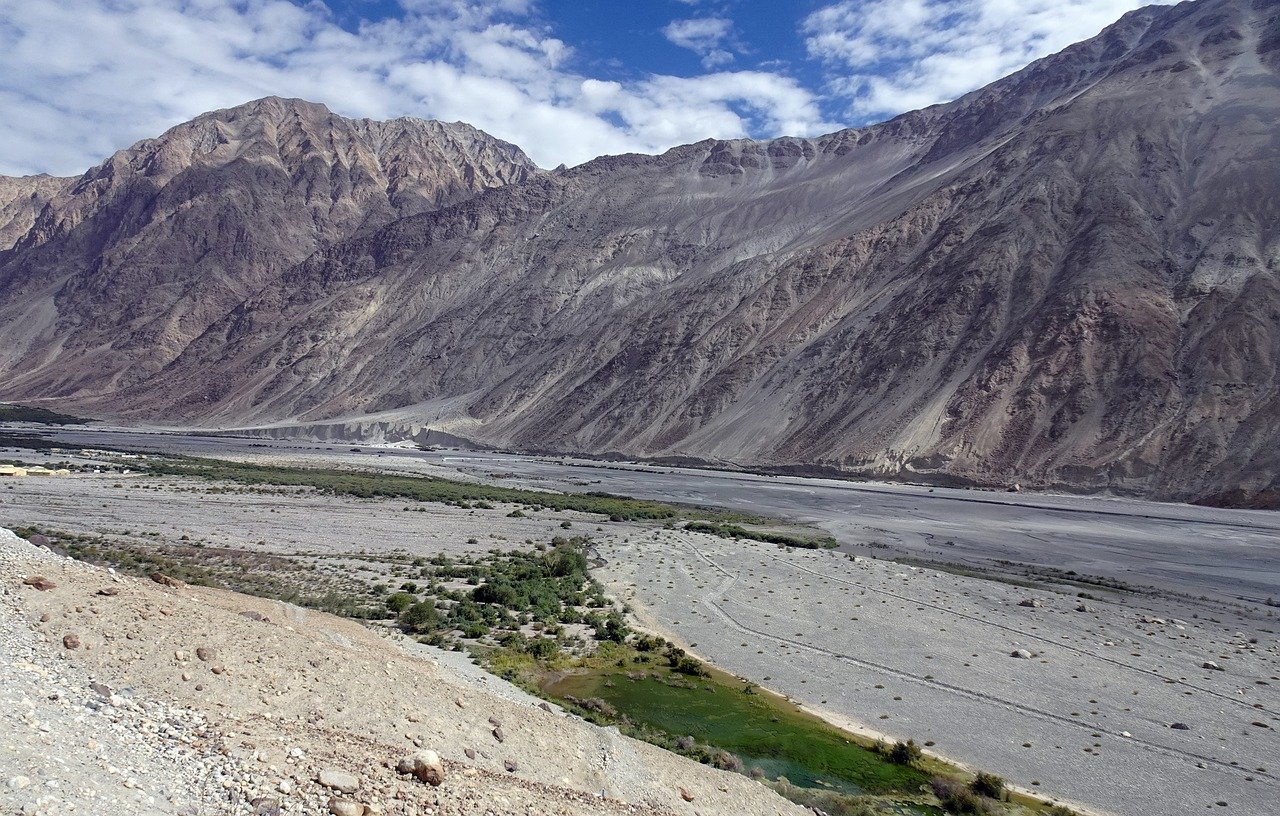The Decline of the Indus Valley Civilization - Causes and Effects
The decline of the Indus Valley Civilization remains a fascinating enigma in the annals of ancient history, shrouded in mystery and speculation. This once-thriving civilization, known for its advanced urban planning, sophisticated drainage systems, and intricate trade networks, faced a gradual decline that ultimately led to its demise. Various factors have been proposed to explain the downfall of this remarkable civilization, ranging from environmental changes to social upheaval and technological stagnation.
One of the key factors believed to have contributed to the decline of the Indus Valley Civilization is environmental changes. Shifts in climate patterns, frequent floods, and prolonged droughts could have disrupted agricultural activities, leading to food shortages and economic instability. The reliance of the civilization on the Indus-Sarasvati river system for sustenance made it particularly vulnerable to any alterations in the river's course or water supply.
Moreover, economic factors played a crucial role in the collapse of the civilization. Changes in trade routes, diminishing resources, and unsustainable agricultural practices may have strained the economic foundations of the Indus Valley Civilization, weakening its prosperity and societal stability. The inability to adapt to evolving economic conditions could have hastened its decline.
Social and political issues within the civilization also likely contributed to its downfall. Internal conflicts, governance challenges, and societal divisions may have eroded the unity and cohesion that were essential for the civilization's survival. The lack of effective leadership and the presence of power struggles could have undermined the social fabric, making it susceptible to external threats.
Cultural changes, including shifts in religious beliefs, artistic expressions, and urban planning, might have played a significant role in destabilizing the Indus Valley Civilization. The loss of cultural continuity and identity could have weakened the collective spirit of the society, making it more susceptible to external influences and internal discord.
Theories of invasion by external forces or large-scale internal migration have also been proposed as potential causes for the decline of the civilization. Whether through military conquest or mass exodus, the disruption caused by such events could have severely impacted the stability and sustainability of the Indus Valley Civilization.
Technological advancements, while instrumental in the initial rise of the civilization, may have also contributed to its downfall. Overreliance on existing technologies, lack of innovation, or failure to adapt to new technological developments could have left the civilization vulnerable to more progressive societies, hastening its decline.
Despite its eventual collapse, the legacy of the Indus Valley Civilization endures, shaping our understanding of ancient history and human development. The lessons learned from its decline continue to inform contemporary discussions on the fragility of civilizations and the importance of adaptability and resilience in the face of changing circumstances.

Environmental Changes
Exploring the factors that led to the decline of the advanced ancient civilization in the Indus Valley region, and the lasting impact it had on the development of human societies.
Environmental changes, such as climate variations, floods, and droughts, are believed to have played a significant role in the downfall of the once-prosperous Indus Valley Civilization. The shift in environmental conditions could have disrupted agricultural practices, leading to food shortages and economic instability. Moreover, natural disasters like floods might have damaged infrastructure and caused widespread destruction, further weakening the civilization's resilience.

Indus-Sarasvati River System
The was a vital component of the Indus Valley Civilization, providing the necessary resources for sustenance and development. The civilization flourished along the banks of these rivers, benefiting from the fertile soil and abundant water supply for agriculture and trade. The Indus and Sarasvati rivers not only facilitated irrigation for crops but also served as transportation routes for goods and people, connecting different regions and fostering cultural exchange.
However, changes in the course of the rivers could have had a profound impact on the civilization. Geological shifts or natural disasters might have altered the flow of these rivers, leading to disruptions in agricultural practices and trade networks. The reliance of the civilization on the stability of the river system made it vulnerable to any significant changes, potentially contributing to its decline.
Moreover, the drying up of the Sarasvati River, as suggested by some researchers, could have further strained the resources available to the civilization. A diminishing water supply would have put pressure on agricultural production and urban settlements, leading to social unrest and economic challenges. The scarcity of water might have also triggered conflicts over control of the remaining resources, destabilizing the once-thriving society.

Economic Factors
When delving into the factors contributing to the decline of the Indus Valley Civilization, economic considerations emerge as a pivotal aspect. The economic landscape of this ancient civilization was intricate, intertwined with trade routes, agricultural practices, and resource management. The prosperity of the civilization relied heavily on its ability to harness the fertile lands along the Indus River and engage in extensive trade networks that spanned across regions.
One of the primary economic factors that potentially led to the downfall of the Indus Valley Civilization was the disruption of trade routes. The civilization's economy was highly dependent on trade with neighboring regions, facilitating the exchange of goods and ideas. Any disturbances in these trade networks, whether due to environmental challenges or conflicts, could have severely impacted the economic stability of the civilization.
Agricultural practices also played a crucial role in the economic sustainability of the Indus Valley Civilization. The advanced irrigation systems and agricultural techniques employed by the inhabitants allowed for bountiful harvests and supported a thriving population. However, changes in environmental conditions, such as erratic monsoons or soil degradation, could have jeopardized the agricultural productivity of the region, leading to food shortages and economic strain.
Resource management is another economic aspect that warrants attention when examining the decline of the civilization. The efficient utilization of resources, including metals, timber, and water, was essential for the functioning of urban centers and industries within the Indus Valley. Mismanagement or depletion of these resources could have hindered the economic progress of the civilization, creating vulnerabilities that could be exploited by external pressures.
In conclusion, the economic factors surrounding trade, agriculture, and resource management likely played a significant role in the decline of the Indus Valley Civilization. By unraveling the complexities of the economic landscape of this ancient society, we can gain valuable insights into the interconnected web of factors that contributed to its ultimate demise.

Social and Political Issues
Social and political issues played a crucial role in the decline of the Indus Valley Civilization. The societal structure of this ancient civilization was complex, with evidence suggesting a hierarchical system where different classes existed. Governance within the civilization might have faced challenges, possibly due to power struggles or ineffective leadership. Additionally, potential conflicts within the society, whether related to resources, territory, or ideology, could have weakened the foundations of the civilization.
Moreover, the lack of a centralized political authority may have made it difficult to address internal disputes effectively. The absence of a unified governance system could have left the civilization vulnerable to external threats or internal unrest. Without strong political cohesion, the Indus Valley Civilization may have struggled to maintain stability and coherence in the face of various challenges.
Furthermore, societal norms and cultural practices could have influenced the social dynamics within the civilization. Religious beliefs, social customs, and traditions might have shaped interactions among individuals and groups, impacting the overall cohesion of the society. Changes in these cultural aspects over time could have led to shifts in power dynamics and social structures, contributing to the decline of the civilization.
It is essential to consider the interconnected nature of social and political issues within the Indus Valley Civilization. The intricate web of relationships, power dynamics, and societal norms likely played a significant role in shaping the trajectory of the civilization. By examining these factors, we can gain a deeper understanding of the challenges that the ancient Indus Valley society faced and the impact they had on its ultimate downfall.

Cultural Changes
When delving into the decline of the Indus Valley Civilization, it is crucial to examine the significant impact of cultural changes on its stability and continuity. The cultural landscape of this ancient civilization was rich and diverse, encompassing various aspects such as religious beliefs, art, language, and urban planning.
Religious beliefs held a central role in shaping the societal fabric of the Indus Valley Civilization. The worship practices, rituals, and spiritual ideologies of the populace reflected a deep connection to the divine and influenced daily life. The shift in religious beliefs over time could have potentially disrupted the social cohesion and traditional values that once held the civilization together.
Artistic expressions, including intricate pottery, seals, and sculptures, provided insights into the creative prowess of the Indus Valley inhabitants. The evolution of artistic styles and themes may have mirrored broader societal changes, indicating shifts in cultural norms, aesthetics, and symbolic meanings.
Language, as a tool for communication and cultural expression, played a pivotal role in fostering unity among diverse communities within the civilization. Changes in linguistic patterns, dialects, or the adoption of new languages could have either strengthened social bonds or created barriers to understanding and cooperation.
Urban planning in the major cities of Mohenjo-Daro and Harappa showcased remarkable feats of engineering and organization. The layout of streets, public buildings, and private dwellings reflected a sophisticated understanding of city design and management. Alterations in urban planning strategies or the decline in infrastructure maintenance might have disrupted the functionality and efficiency of these urban centers.
The intricate interplay of cultural elements within the Indus Valley Civilization highlights the dynamic nature of human societies and the profound influence of cultural changes on the course of history.

Invasion and Migration
When delving into the decline of the Indus Valley Civilization, one cannot ignore the intriguing theories surrounding invasion and migration as potential catalysts for its downfall. The once flourishing civilization faced the looming threat of external forces encroaching on its territories or internal movements leading to significant shifts in population dynamics.
Historians and archaeologists have long debated the role of invasions by foreign powers in weakening the foundations of the Indus Valley Civilization. The possibility of external forces breaching the sophisticated urban centers and disrupting the established societal order raises questions about the resilience of the civilization in the face of potential conflicts.
Moreover, internal migration patterns within the region could have also played a pivotal role in shaping the fate of the civilization. The movement of people within the Indus Valley, whether due to environmental pressures, economic opportunities, or social unrest, may have led to demographic changes that strained the existing infrastructure and resources.
By examining the evidence of warfare, fortifications, and population movements in archaeological findings, researchers aim to piece together the puzzle of how invasion and migration contributed to the decline of this ancient civilization. The interplay between external threats and internal displacements offers a nuanced perspective on the complex factors at play during this tumultuous period.

Technological Advancements
Technological advancements played a crucial role in both the rise and fall of the Indus Valley Civilization. The civilization was known for its remarkable urban planning, with cities like Mohenjo-Daro and Harappa showcasing sophisticated drainage systems, grid layouts, and multi-story buildings. These advancements in urban infrastructure not only facilitated efficient living conditions but also reflected a high level of engineering and architectural knowledge.
Metallurgy was another significant technological aspect that contributed to the civilization's development. The Indus Valley people were skilled in working with metals like copper, bronze, and lead, creating tools, weapons, and intricate ornaments. This expertise in metallurgy not only boosted their economy through trade but also enhanced their military capabilities.
Trade networks were vital for the Indus Valley Civilization, connecting them to distant regions like Mesopotamia and Central Asia. The advanced technology of maritime vessels allowed for the transportation of goods across the Arabian Sea, fostering economic prosperity and cultural exchange. However, reliance on these trade routes also made the civilization vulnerable to disruptions and dependencies.
Despite these technological advancements, challenges arose that contributed to the decline of the civilization. The lack of innovation and adaptation in agricultural practices may have led to soil depletion and decreased crop yields, impacting food security. Additionally, the reliance on trade networks made the civilization susceptible to economic downturns and resource shortages, especially during periods of environmental instability.
Overall, technological advancements in urban planning, metallurgy, and trade networks were instrumental in the growth of the Indus Valley Civilization. However, the civilization's inability to effectively address changing environmental conditions and economic challenges ultimately played a significant role in its decline.

Legacy and Influence
Exploring the factors that led to the decline of the advanced ancient civilization in the Indus Valley region, and the lasting impact it had on the development of human societies.
The legacy of the Indus Valley Civilization continues to resonate through the annals of history, leaving an indelible mark on the tapestry of human development. Despite its eventual decline, the influence of this ancient civilization can still be felt in various aspects of modern society.
One of the most significant legacies of the Indus Valley Civilization lies in its urban planning and infrastructure. The meticulously planned cities with advanced drainage systems, brick-lined streets, and well-organized layouts set a precedent for future urban centers. The concept of planned urban living that emerged from this civilization has endured through the centuries, shaping the way we design and construct our cities today.
Moreover, the technological advancements of the Indus Valley Civilization, particularly in metallurgy and trade networks, have had a lasting impact on human progress. The mastery of metalworking techniques and the establishment of extensive trade routes not only fueled the civilization's growth but also paved the way for future innovations in craftsmanship and commerce.
Furthermore, the artistic and cultural achievements of the civilization, evident in intricate pottery, seals, and sculptures, have left an artistic legacy that continues to inspire creativity and craftsmanship. The intricate designs and motifs found in artifacts from the Indus Valley Civilization serve as a testament to the sophistication and creativity of its people, influencing artistic traditions for generations to come.
On a broader scale, the decline of the Indus Valley Civilization serves as a cautionary tale about the fragility of human societies and the impact of environmental, economic, and social factors on their longevity. By studying the causes of its downfall, we gain valuable insights into the vulnerabilities that can undermine even the most advanced civilizations, prompting us to reflect on our own societal structures and practices.
In conclusion, the legacy and influence of the Indus Valley Civilization transcend time and geography, reminding us of the intricate interplay between past and present. As we unravel the mysteries of this ancient civilization, we unravel a part of ourselves, connecting the threads of history to the fabric of our modern world.
Frequently Asked Questions
- What were the main environmental factors that contributed to the decline of the Indus Valley Civilization?
The main environmental factors that may have led to the downfall of the civilization include climate change, floods, and droughts. These environmental shifts could have disrupted agricultural practices and resource availability, impacting the sustainability of the civilization.
- How did economic factors play a role in the collapse of the Indus Valley Civilization?
Economic aspects such as trade routes, agricultural practices, and resource management likely influenced the collapse of the civilization. Changes in trade patterns, agricultural productivity, or resource depletion could have weakened the economic foundations of the society.
- What societal and political issues might have contributed to the decline of the civilization?
Societal structure, governance, and potential conflicts within the civilization could have weakened its foundations. Social unrest, governance issues, or internal conflicts may have played a role in the decline of the Indus Valley Civilization.
- How did cultural changes impact the stability of the Indus Valley Civilization?
Cultural shifts, including changes in religious beliefs, art, language, and urban planning, might have disrupted the stability and continuity of the civilization. These cultural transformations could have affected social cohesion and identity.
- Were invasions or migrations significant factors in the decline of the Indus Valley Civilization?
Theories of invasions by outside forces or internal migration patterns are considered potential causes for the civilization's decline. External invasions or large-scale migrations could have disrupted the societal structure and power dynamics within the civilization.
- What role did technological advancements play in the rise and fall of the Indus Valley Civilization?
Technological advancements, such as urban planning, metallurgy, and trade networks, were crucial to the civilization's development. However, technological changes or stagnation could have also contributed to its eventual decline.
- How has the legacy of the Indus Valley Civilization influenced our understanding of ancient history?
The enduring legacy of the civilization continues to shape our understanding of ancient history and human development. The artifacts, structures, and cultural practices left behind provide valuable insights into early human societies and urban civilizations.



















